Modern Revival of Tibetan Opera
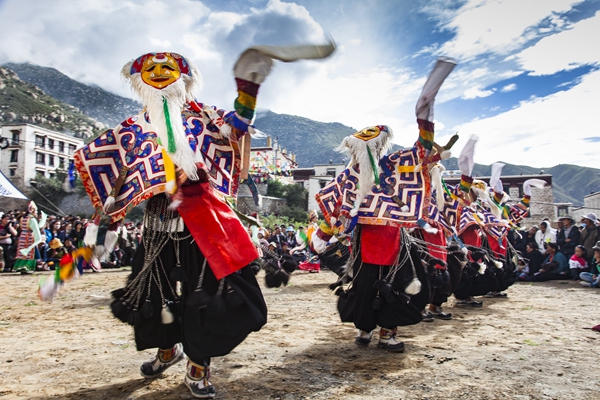
With a history of more than 600 years, Tibetan Opera has been dubbed "the living fossil of traditional Tibetan culture." Having been inscribed on both China's national intangible cultural heritage list and UNESCO (United Nations Educational, Scientific and Cultural Organization)'s Representative List of the Intangible Cultural Heritage of Humanity, the ancient opera has gained many modern devotees. Owing to local people's passion for the opera and the local government's support in its preservation, the ancient cultural treasure continues to shine in modern times.

Legendary Evolvement
Tibetan Opera, called Aje Lhamo (fairy sisters) in Tibetan language, boasts a history of more than 600 years, about 400 years longer than another well-known Chinese cultural treasure, Peking Opera.
In the 15th century, Drupthob Thangtong Gyalpo, a high-ranking monk and iron bridge builder, decided to build iron bridges across many key rivers in Xizang to improve local transportation.
He trekked all over Xizang (in Southwest China) to raise donations to fund the bridge projects. While on his travels he noticed that Tibetans all loved the local opera. To collect more donations, he recruited seven beauties from Xizang's Qonggyai County to perform at his fundraising events. The girls were all good at traditional Tibetan-style singing and dancing. Thanks to the contribution of the seven girls, donations were easily raised wherever they put on a performance, and all the donations were used for bridge building, metal smelting, and labor costs.

With the proliferation of iron bridge construction, Thangtong and his performance troupe became famous, and officials across the region came to him for bridge orders. Tibetan Opera is believed to have originated in this way, and thus Thangtong is considered the father of the art form.
Thangtong was a talented architect, metallurgist and artist. During his reported 79-year life span, he constructed 58 iron-chain bridges in Xizang.
Today, to honor him, a salute to his statue precedes each Tibetan Opera performance, which usually concludes with the presentation of the hada (a traditional ceremonial scarf representing purity and honesty) by the performers and audience members to Thangtong's statue.
In the 17th century, during the reign of the Fifth Dalai Lama (1617-1682), Tibetan Opera was separated from religious rituals and became an independent dramatic form.
Generally, there are eight types of storylines about Tibetan Opera practiced in different areas. They can be about Tibetan history, Buddhism and ancient legends of heroes.
As an important Chinese cultural heritage, Tibetan Opera is often performed at important national events, such as the Beijing Olympic Games in 2008 and the Shanghai World Expo in 2010.
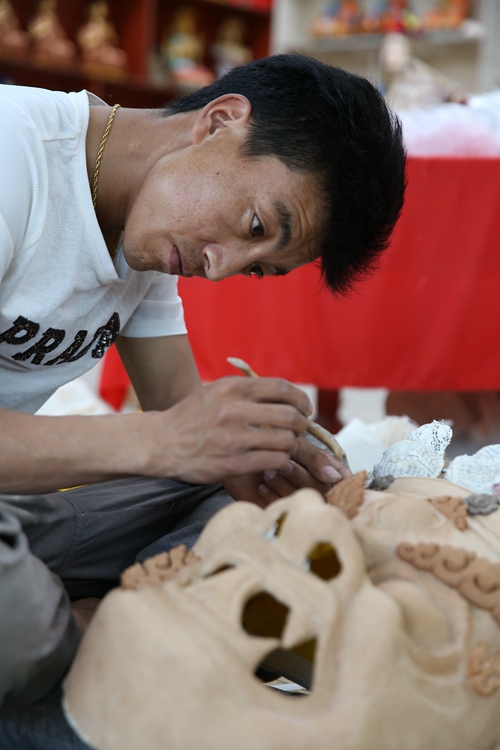
Unique Art Form
Traditionally, a Tibetan Opera theater was an open circular space sheltered by a canopy. Today, Tibetan Opera does not necessarily require a fixed stage for performance. An open ground in the middle of a village, a clearing in a forest, inside a big tent or under a big canvas, can all be suitable to stage the opera. Stage settings and/or a curtain are also not required during the performance.
Tibetan Opera is traditionally performed on many local occasions, such as Tibetan New Year (from the first day to the 15th day of the first Tibetan lunar month), the Shoton Festival (from the 29th day of the sixth Tibetan lunar month to the 1st day of the seventh Tibetan lunar month), horse races, harvest celebrations or religious rituals. A distinctive feature of the opera lies in the fact that it is performed with masks from the beginning to the end. The duration of performances varies from less than two hours to seven days.

Tibetan Opera is generally divided into the old school and the new school. The four most popular blue-mask sects, namely the opera troupes of Jormolung, Jongba, Shangpa and Jangar, belong to the new school. The old school mainly refers to the white-mask sects, plus those of the yellow mask.
Tibetan Opera is usually composed of three parts: The prelude, the main body and the conclusion. First, a narrator makes an opening statement to indicate that the performance begins; second, all performers perform a story with songs and dances; and third, the narrator makes a closing speech.
Tibetan Opera incorporates more than 20 different singing tunes, each of which represents a different gender, age, emotion, plot and character.
The various dancing gestures include climbing, sailing, flying, sailing in the sea, horse riding, fighting evil and paying homage to the Buddha.
There are usually 16 actors in a traditional Tibetan Opera, made up of seven hunters, seven fairies and two kings. It is believed that the 16 different figures originated from Chogyal Norsang, one of the eight traditional Tibetan Opera storylines.
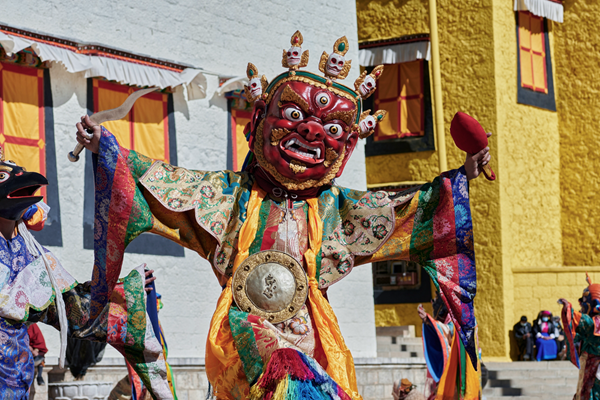
Modern Development
Despite the availability of multiple entertainment options in modern times, rural people in Lhokha are still fond of the ancient opera.
Tashi Choten Village in Nedong County of Lhokha City, in Xizang Autonomous Region, is famous for its unique Tibetan Opera, known as the Yarlung Tashi Sholpa. The village is famed as the Opera Village. The Tashi Sholpa Tibetan Opera is distinguished by actors wearing yellow masks.
Nyima Tsering is a leading performer and promoter of Tibetan Opera in Tashi Choten Village, Nedong County, in Xizang Autonomous Region. He has devoted to passing on the ancient cultural practice to the later generations for more than 30 years.
The 49-year-old Nyima is the 11th-generation inheritor of Tashi Sholpa Tibetan Opera in his family clan. Thanks to his efforts, he was accredited as a State-level inheritor of the intangible cultural heritage in 2006.
"I have learned different singing tunes of different characters of the opera since I was a boy. I learned the tunes from an old woman while we were herding together in the mountain.
"At the age of 16, I was employed by the opera troupe in our village, because I was very good at remembering different types of opera scripts," recalls Nyima.
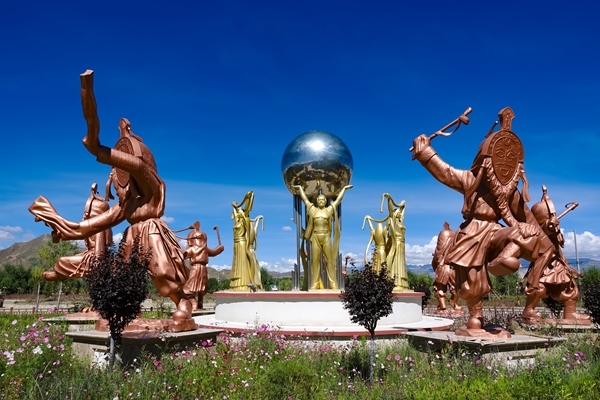
"The revival of the Tibetan culture and the development and promotion of the opera are both great examples of the benefits of the country's reform and opening-up policy, which was implemented during the late 1970s," says Nyima.
According to him, there were only 16 opera actors in his village before 1968, and the opera troupe did not perform during the following two decades.
In 1987, a new opera troupe was set up to revive the art form. Due in large part to Nyima's persevering efforts to expand the troupe during the past few decades, the village now has 30 professional Tibetan Opera performers.
In 2011, Xizang's cultural affairs department began providing financial support to the troupe, so the intangible cultural heritage would stay alive. According to Nyima, his county now has more than 150 opera performers in six opera troupes.
Tourism is another stimulus for the resurgence of the ancient opera in Nyima's village. The village has set up a performance team for tourists.
"Our village has become a tourist attraction. Tourists come to our village because they love watching the opera and the traditional Tibetan dances and songs.
"Thanks to the rapid development of tourism industry, each of our opera performers receives a monthly salary for their involvement in boosting the industry," says Nyima, adding that many villagers have begun operating family inns to accommodate tourists.
Nyima plans to lead the troupe's members in performing Tibetan Opera in more villages in Xizang. He also hopes more people, especially young people, will love the ancient art form. He has been invited to provide a course on the opera to children in his village's primary school, so the children can better understand the unique charm of the art form.
"I hope Tibetan Opera will be performed in more villages in Xizang, and the ancient cultural practice will continue to be a shining 'star' in the world of the modern performing arts," says Nyima.
Photos Supplied by VCG
(Source: China Today / Women of China English Monthly August 2023 issue)
Please understand that womenofchina.cn,a non-profit, information-communication website, cannot reach every writer before using articles and images. For copyright issues, please contact us by emailing: website@womenofchina.cn. The articles published and opinions expressed on this website represent the opinions of writers and are not necessarily shared by womenofchina.cn.


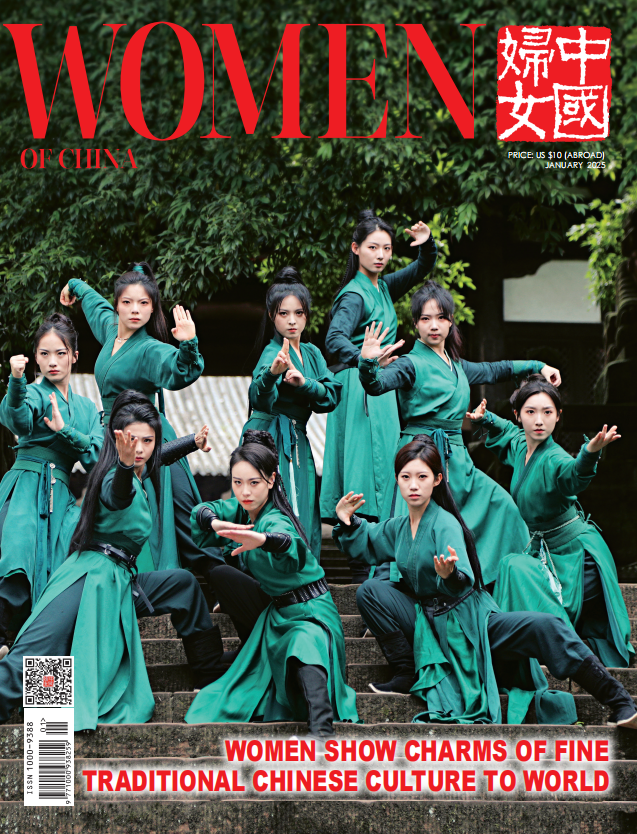

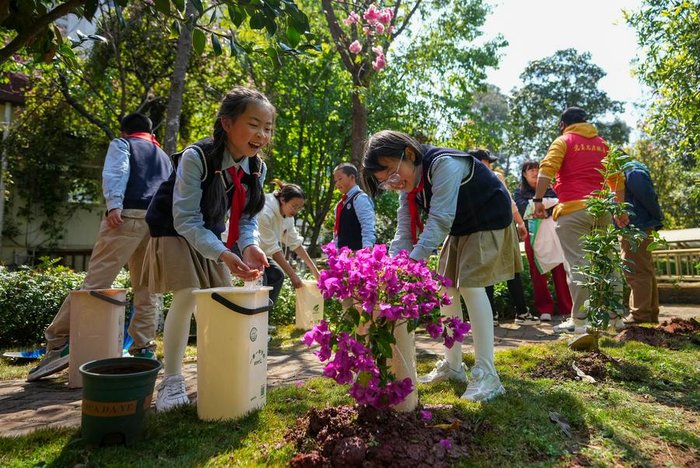

.jpg)

 WeChat
WeChat Weibo
Weibo 京公网安备 11010102004314号
京公网安备 11010102004314号